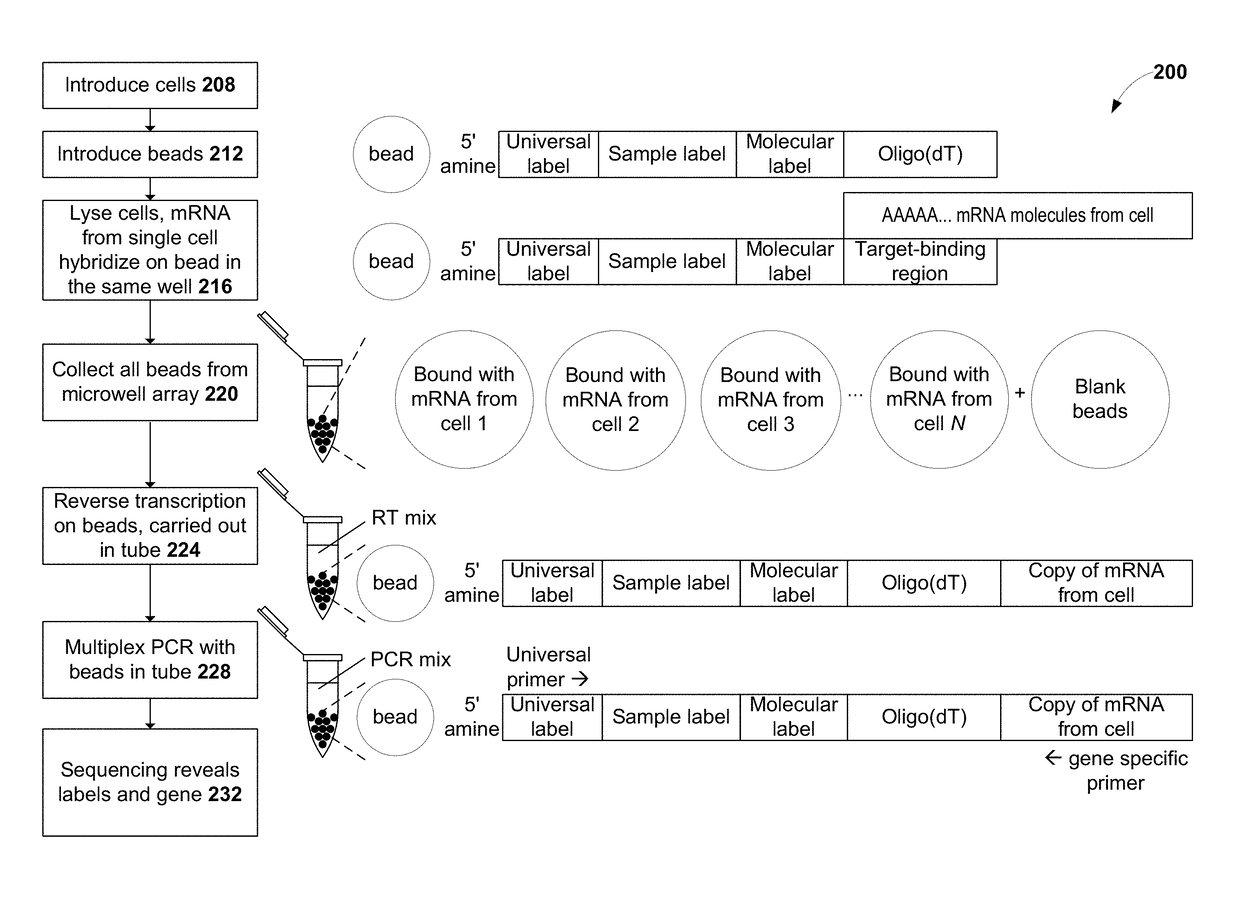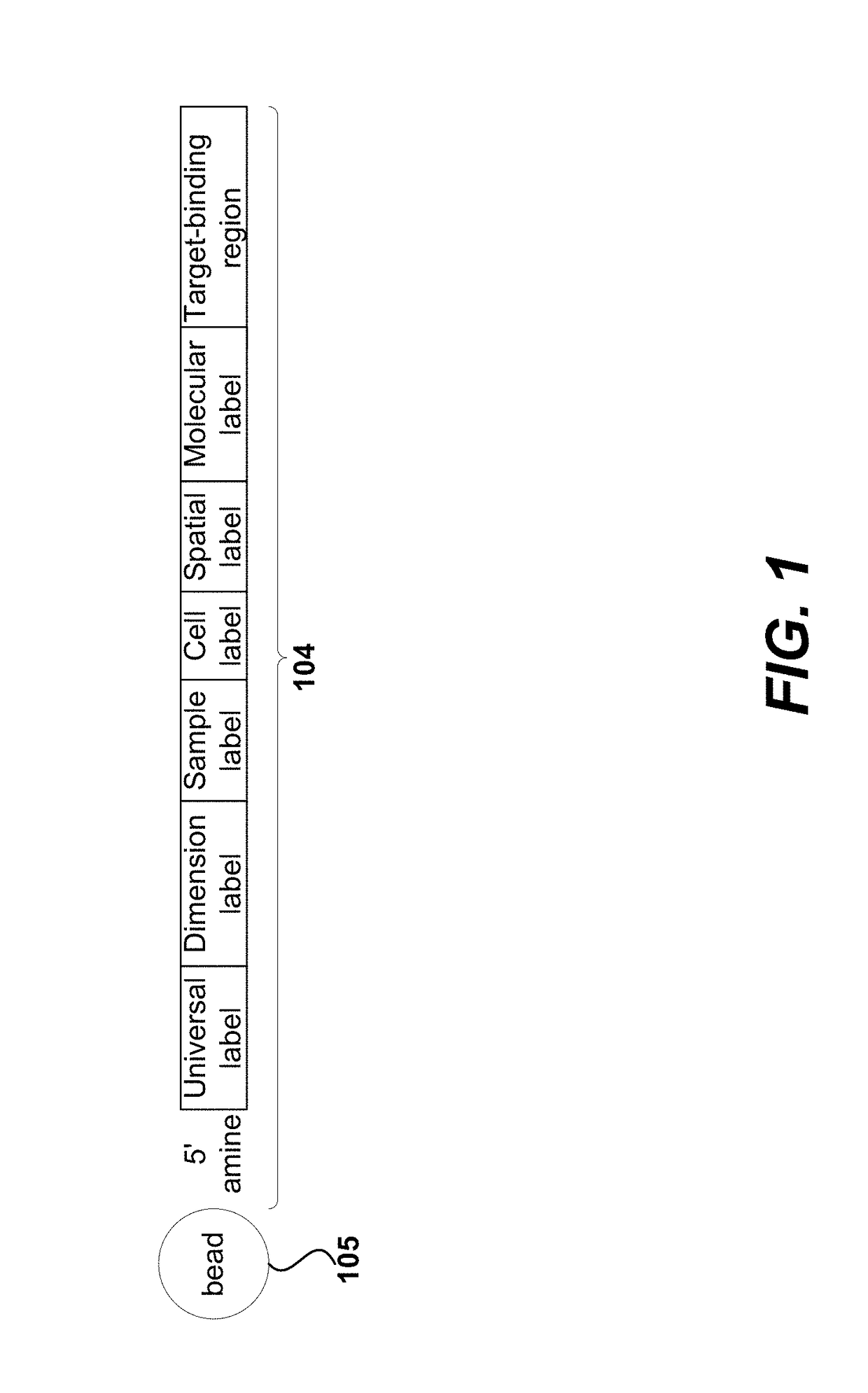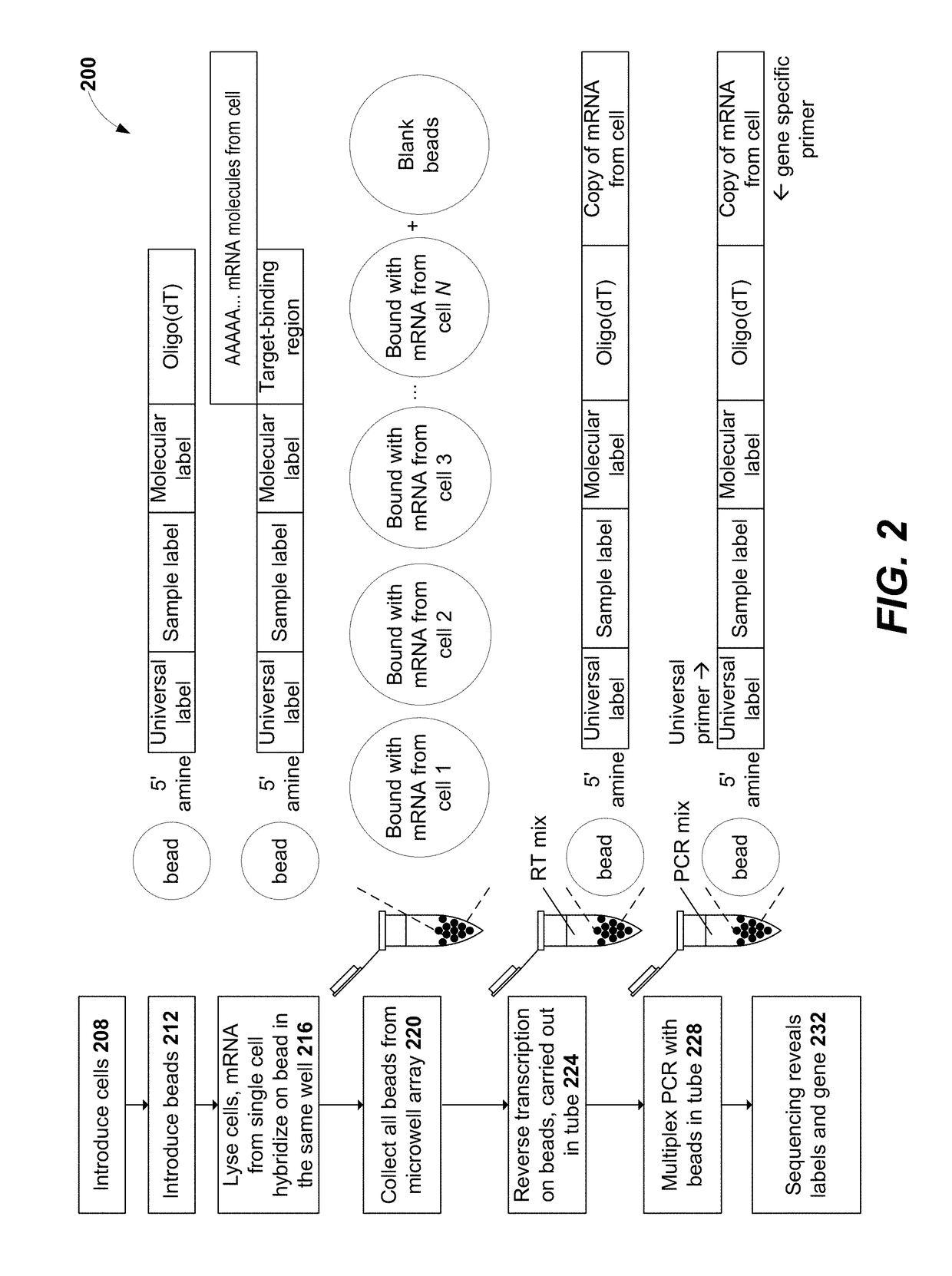Methods for cell label classification
a cell label and label technology, applied in the field of molecular barcoding, can solve problems such as overestimation of cell counts
- Summary
- Abstract
- Description
- Claims
- Application Information
AI Technical Summary
Benefits of technology
Problems solved by technology
Method used
Image
Examples
example 1
Separation of Signal Cell Labels and Noise Cell Labels—Second Derivatives
[0295]This example describes separating signal cell labels (also referred to as true cell labels) and noise cell labels based on the number of reads (or molecules) associated with the cell labels.
[0296]In some instances, noise cell labels may have fewer reads (or molecules) associated with them than signal cell labels. For example, noise cell labels can be caused by cells paired with no bead being lysed and their nucleic acid contents diffusing and associating with beads not paired with any cells. This type of noise cell labels can contain a portion of total nucleic acid contents of a cell. Thus, molecules from the same cell can appear to be from two different cells (e.g., as if they were from two different beads because the cell label has mutated).
[0297]As another example, noise cell labels can be caused by mutations during the manufacturing process of the beads. Also, noise cell labels can be caused by insuff...
example 2
Separation of Signal Cell Labels and Noise Cell Labels—Clustering
[0301]This example describes separating signal cell labels (also referred to as true cell labels) and noise cell labels based on their expression patterns (also referred to as feature vectors).
[0302]In some embodiments, samples for stochastic barcoding experiments can contain cell types with wide range of expression levels. In such experiments, some cell types could have very similar number of molecules to noise cell labels. To separate true cell labels from noise cell labels when numbers of molecules associated are indistinguishable, clustering techniques can be used to classify noise cell labels and each cell type with low expression level. The method can be based on the assumption that cell labels within the same cell type would have more similar expression patterns than cell labels between different cell types, and noise cell labels would also have more similar feature vectors to each other than to true cell labels...
example 3
Identification of True Cells and Noise Cell Labels—Second Derivatives
[0305]This example describes separating true cells (also referred to as signal cell labels or true cell labels) and noise (also referred to as noise cells or noise cell labels) based on the number of reads (or molecules) associated with the cells (or cell labels).
[0306]Example Dataset 1.
[0307]This dataset was processed using the BD™ Breast Cancer gene panel (BrCa400) with three distinct breast cancer cell lines and donor isolated PBMCs (Peripheral Blood Mononuclear Cells). The method 400b, described with reference to FIG. 4, identified 8017 cells, among which 186 cells were identified as noise cells by the method 600a, described with reference to FIG. 6. The method 600a detected additional 1263 cells, which were confirmed to be mostly PBMCs, see FIGS. 13A-13B, 14A-14D. FIGS. 13A-13B are non-limiting exemplary plots illustrating comparison of cells identified by the method 400 illustrated with reference to FIG. 4 (F...
PUM
| Property | Measurement | Unit |
|---|---|---|
| Distance | aaaaa | aaaaa |
| Threshold limit | aaaaa | aaaaa |
Abstract
Description
Claims
Application Information
 Login to View More
Login to View More - R&D
- Intellectual Property
- Life Sciences
- Materials
- Tech Scout
- Unparalleled Data Quality
- Higher Quality Content
- 60% Fewer Hallucinations
Browse by: Latest US Patents, China's latest patents, Technical Efficacy Thesaurus, Application Domain, Technology Topic, Popular Technical Reports.
© 2025 PatSnap. All rights reserved.Legal|Privacy policy|Modern Slavery Act Transparency Statement|Sitemap|About US| Contact US: help@patsnap.com



